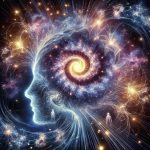
Consciousness as Fundamental: David Chalmers’ Theory and Why It Matters
February 12, 2025The Journey So Far: Understanding Consciousness, Alignment, and Reality
February 16, 2025Introduction: Are Our Thoughts Connected to the World?
Carl Jung, one of the most influential thinkers of modern psychology, introduced the idea that the mind is not isolated from reality but intricately connected to it. His theories of synchronicity and the collective unconscious suggest that our thoughts, emotions, and even symbols we encounter are not random, but part of a larger, unseen framework linking individual minds with the fabric of reality itself.
This perspective challenges the purely materialist view of reality and aligns with many of the ideas we have explored in previous blog posts:
- The Philosophy of Alignment (As Above, So Below: How Inner Alignment Shapes Outer Reality) suggests that internal states influence external experiences.
- Chalmers’ Fundamental Consciousness (Consciousness as Fundamental: Why It Matters to Each of Us) argues that mind is not just a byproduct of the brain but a fundamental feature of the universe.
If consciousness is fundamental and the inner world shapes the outer, then Jung’s idea that meaning appears in mysterious, non-causal ways through synchronicity begins to make sense—not as superstition, but as a real psychological and possibly metaphysical phenomenon.
Jung’s Concept of the Collective Unconscious
Jung proposed that beneath our personal unconscious (memories, repressed emotions, etc.), there exists a deeper layer of the mind that all humans share—the collective unconscious.
📌 Key Ideas of the Collective Unconscious: ✔ Archetypes: Universal symbols (the Hero, the Shadow, the Wise Old Man) that shape human thought, myths, and dreams. ✔ Inherited Psychological Structures: Certain fears, instincts, and patterns of thought are not learned but embedded in the psyche from birth. ✔ A Shared Human Connection: The same symbols, themes, and unconscious drives emerge across cultures and time periods, suggesting that individual minds are linked at a fundamental level.
🚀 If we accept that consciousness is not purely individual but part of a larger structure, then the boundaries between “self” and “world” begin to blur. This naturally leads to Jung’s other radical idea—synchronicity.
Synchronicity: Meaningful Coincidences or Hidden Order?
Synchronicity is the phenomenon where events seem meaningfully connected despite lacking a direct causal relationship. Unlike ordinary coincidences, these moments feel charged with significance, as if reality itself is mirroring the inner world.
📌 Examples of Synchronicity:
- Thinking of an old friend you haven’t spoken to in years, only for them to call you unexpectedly.
- Encountering a specific symbol (an animal, a word, a number) multiple times right when you’re struggling with a decision.
- Reading about a concept for the first time, only to hear it mentioned in an unrelated conversation later that day.
🔹 Jung’s Key Argument: The psyche and the external world are not strictly separate. Rather than only interacting through cause and effect, they are interwoven through deeper patterns of meaning.
🚀 Connection to Previous Topics: ✔ As Above, So Below: Synchronicity is a psychological reflection of Hermeticism—our inner thoughts manifest externally in symbolic ways. ✔ Chalmers’ Fundamental Consciousness: If consciousness is fundamental, then synchronicity could be a sign that reality is structured more like a mind than a machine. ✔ Alignment: The more we attune ourselves to our purpose, values, and emotions, the more these synchronicities seem to arise, as if reality is mirroring our inner state.
How Synchronicity Impacts Daily Life and Decision-Making
If Jung was correct, and our thoughts, intentions, and unconscious patterns are linked to external events, then synchronicity may be more than coincidence—it may be a signal.
📌 How to Interpret and Use Synchronicity: ✔ Pay Attention to Recurring Themes: If certain images, words, or ideas keep appearing, ask: What is this trying to show me? ✔ Journal About Synchronicities: Writing down these events helps reveal patterns and deeper meanings over time. ✔ Trust Your Intuition: Sometimes, a synchronicity is a sign that you’re on the right (or wrong) path. Listen to what resonates. ✔ Use It for Alignment: When synchronicities appear, they can serve as reminders to realign with your values, goals, and deeper purpose.
🚀 If reality is fundamentally connected to consciousness, then synchronicity may be evidence of how the universe “responds” to inner alignment.
Conclusion: A Universe More Connected Than We Think
Jung’s concepts of the collective unconscious and synchronicity offer a radical but compelling perspective on the nature of reality—one where mind and world are not separate, but deeply intertwined.
🔥 If consciousness is fundamental, then meaning is not imposed onto reality—it is discovered within it. 🔥 If synchronicity is real, then perhaps life is more than random chaos—perhaps it is structured by hidden patterns of connection. 🔥 If we wish to better understand reality, we must first understand the mind, because the two are reflections of one another.
🚀 Jung’s work, in many ways, is an early exploration of what modern philosophy and quantum consciousness theories are only beginning to grasp: We are not passive observers of reality, but active participants in shaping it.
What patterns have you noticed in your life? Could they be synchronicity trying to tell you something?
